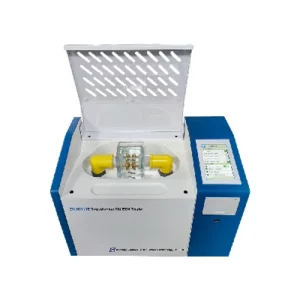If the breakdown voltage of a transformer is less than its rated voltage, it indicates a potential problem with the insulation system of the transformer. The breakdown voltage represents the point at which the insulation fails and allows electrical current to flow through the transformer.
If the breakdown voltage is lower than the rated voltage, it means that the insulation system may not be able to withstand the rated voltage during normal operation. This can lead to various issues:
- Electrical breakdown: When the voltage exceeds the breakdown voltage, electrical arcing can occur within the transformer. This arcing can cause damage to the insulation, leading to further degradation and potential failures.
- Reduced insulation life: The insulation system of a transformer is designed to provide electrical isolation and protect the conductive components. If the breakdown voltage is lower than the rated voltage, the insulation is more likely to deteriorate over time due to repeated stress from voltage surges.
- Increased risk of faults: Lower breakdown voltage increases the risk of insulation failures, such as short circuits or electrical faults. These faults can result in damage to the transformer, disruption of power supply, and potential safety hazards.
To address this issue, it is crucial to investigate the cause of the lower breakdown voltage. Possible reasons could include degraded insulation, moisture contamination, excessive thermal stress, or manufacturing defects. Depending on the severity of the situation, corrective actions may involve repairing or replacing the insulation, improving the cooling system, or performing maintenance procedures recommended by the manufacturer. Regular testing and maintenance of transformers are essential to ensure their reliable and safe operation.
